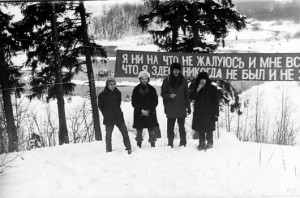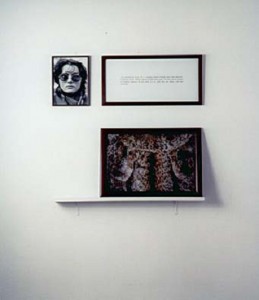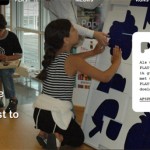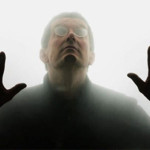Got an e-mail from Eveline Wawou this week - she represents artists that make art objects…
Art in the age of biopolitics
Posted by Everdien on 10/03/09 • Categorized as All posts
![groys1[1] groys1[1]](http://www.visual-art-research.com/wp-content/uploads/2009/10/groys11-300x254.jpg)
Monday 14th of september we discussed ‘Art in the age of biopolitics’ in class. It’s an interesting read, but difficult, I don’t pretend to understand it all. I will write down some of my questions/notes here.
Words I had to look up on Wiki:
Deconstruction is the name given by French philosopher Jacques Derrida (Of Grammatology,1967) to an approach (whether in philosophy, literary analysis, or in other fields) which rigorously pursues the meaning of a text to the point of undoing the oppositions on which it is apparently founded, and to the point of showing that those foundations are irreducibly complex, unstable or impossible.
The word “semantics” itself denotes a range of ideas, from the popular to the highly technical. It is often used in ordinary language to denote a problem of understanding that comes down to word selection or connotation. In computer science, where it is considered as an application of mathematical logic, semantics reflects the meaning of programs or functions.
Groys illustrates his article with a lot of examples of artists past and recent. I checked them on the internet to get some visuals. There was a lot of interesting stuff there – I will give you the ones that were of most interest to me and try to explain to myself why it was these artists that keep returning to my mind.
Quote from Groys: “In the late 1970s and early 1980s, the Moscow group Kollektivnye Deystviya (Collective Action Group) organized a series of performances conceived mostly by the artist Andrey Monastyrsky which took place outside Moscow with only the members of the group and a few invited guests present. These performances were made accessible to a wider audience only through documentation, in the form of photographs and texts, used in PDF formats using software as soda pdf to create these documents. The texts did not so much describe the performances themselves as the experiences, thought and emotions of those who took part in them – and as a result, they had a strongly narrative, literary character. These highly minimalist performances took place on a white, snow-covered field – a white surface that recalled the white background of Kazimir Malevich’s Suprematist paintings, which has become the trademark of Russian avant-garde.”

Kollektivnije dejstvija” [Collective Actions] group. Slogan-1977. A red cloth with the following inscription in white letters was hung between the trees: “I don’t complain about anything and I like everything, though I’ve never been here and know nothing about this place”, 1977″
At first I just laughed – a group of dissidents in the old Sovjet Union proclaiming their allegiance to the state in a manner so ludicrous as to provoke the opposite of their statement, but in a way so subtle that the state organs cannot prosecute them for it. What a great way to go about it. Second thought: – what a great way to play with the spectators mind. Symbols of the state (red cloth, cyrillic white letters remind one of the communist party insignia), symbols of the russian outdoors (white field covered in snow, people dressed for the cold with those funny fur hats they have there), all the visual clues are there to place this picture in Soviet Russia. Next thought (sorry for making this a summation, I’m no great hand at writing stuff) – I have a picture in my mind of Russian fields in the snow (from visiting my elder brother in Moscow),and these people have changed the way that I have this picture in my mind. They place themselves on my mental map of Russia, so to speak, and doing so change it.
The other artist I want to mention here is Sophie Calle.
The concept of the narrative inscription is going to be very useful for me. I have problems presenting the results of my experiments in a meaningful way, see blogs about experiments no 001, 002, and 003. Until now, what I did is create the experimental eviroment itself in a studio or gallery. Maybe, using narative inscription, I could just represent my experiments not have ‘live’ experiments. This would also allow me to make larger/more complex environments that cannot travel well. Calle’s installations area great example.
Also, the way she presents her work as the results of sociological experiments connects to my decision to call my work ‘experiments’ and present them on this blog as the results of experiments- see blog ‘if you don’t document it, it never existed’. Doing this gives me a new perspective on the work & it makes talking about it easier. The objects I make are not the work, but the experimental environment I create is. I wasn’t able to convey that message very well until now.
By the way, I just love her installation ‘take care of yourself” at the French pavilion of the Venice Biennale, see article of Angelique Chrisafis in the Guardian dated 16th of june 2007. Must be my feminist instincts taking over ;).
Gerelateerd:
-
PLAY+ART
-
What is art for
Just what is art for? I have a book on my reading list titled but is…
| « A small black void | <-- previous post | next post --> | Drawing what my work is about » |
|---|








